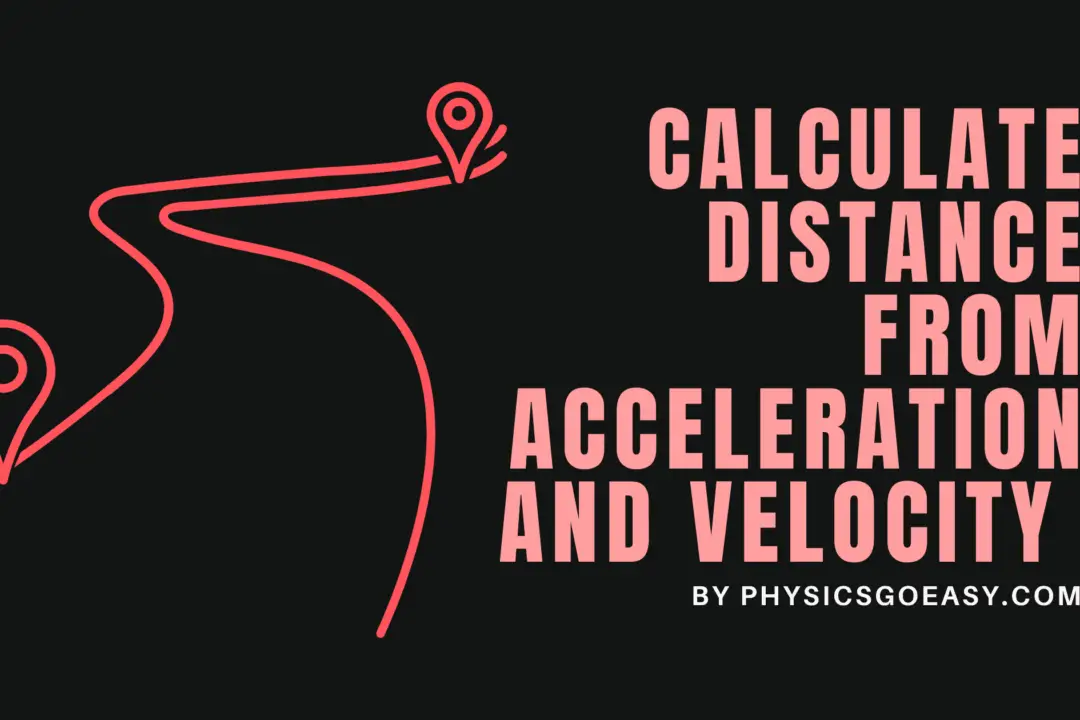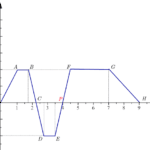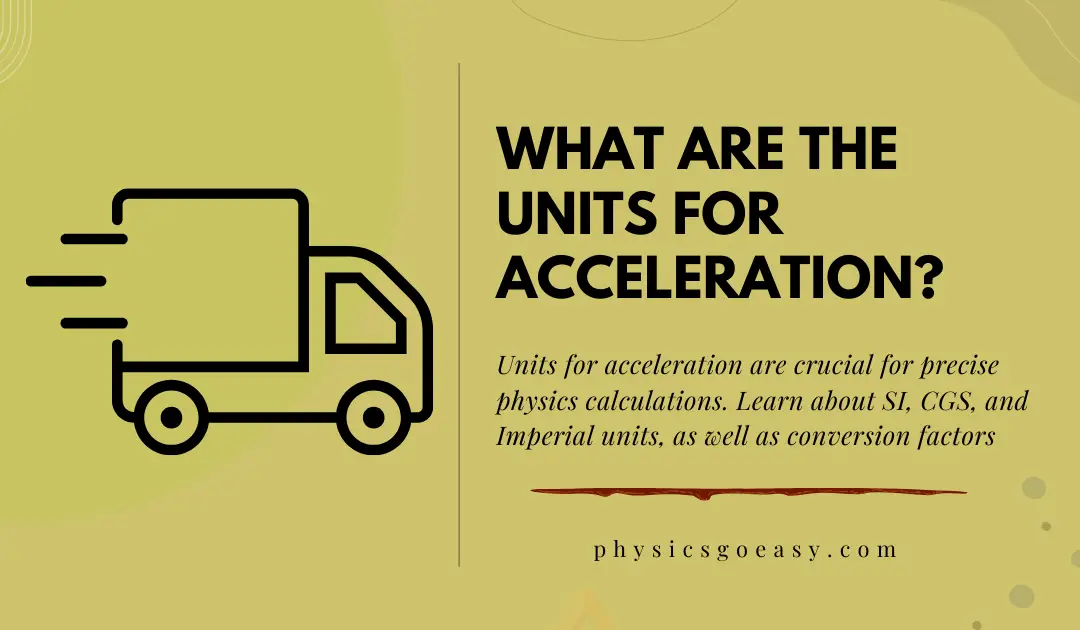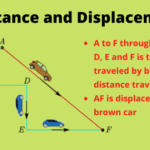
How to Solve Kinematics Problems
In this comprehensive article learn How to solve kinematics problems. Kinematics is the study of motion without considering the forces that cause it. In this article, we will discuss how to solve kinematics problems for one-dimensional, two-dimensional, and three-dimensional motion involving constant acceleration.
Understanding Kinematic Variables
Before studying the kinematic equations, it’s important to understand the variables involved in solving these problems. Here are the kinematic variables you’ll encounter frequently:
- Initial Position $(x_0 \text{ or } y_0)$: The starting point or location of an object before any motion occurs, measured along the $x$ or $y$ axis.
- Final Position $(x \text{ or } y)$: The ending point or location of an object after motion has taken place, measured along the $x$ or $ y$ axis.
- Initial Velocity $(v_0 \text{ or } u)$: The speed and direction of an object at the beginning of a motion, usually denoted as $v_0$ (or $u$ in some cases).
- Final Velocity $(v)$: The speed and direction of an object at the end of a motion.
- Acceleration $(a)$: The rate at which an object’s velocity changes over time, indicating how quickly the object speeds up, slows down, or changes direction.
- Time $(t)$: The duration or interval during which the motion occurs, usually measured in seconds.
These variables are the foundation for solving problems involving constant acceleration.
Understanding Acceleration
Definition of Acceleration
Acceleration is the rate of change of velocity over time. It can be represented as a vector, with positive and negative components corresponding to the direction of motion. Positive acceleration is in the direction of travel, while negative acceleration is opposite the direction of travel.
There are several types of acceleration, including:

Acceleration Vectors and Direction of Travel
When solving problems, it’s important to consider the direction of motion. The direction can be represented by acceleration vectors. Remember that positive acceleration is in the positive direction of travel, while negative acceleration is in the negative direction.
This distinction can be crucial when analyzing motion in the vertical and horizontal directions. The acceleration vector $(\vec a)$ can be represented as:
$$\vec a=a_x\hat i+a_y\hat j+a_z\hat k$$
Centripetal and Tangential Acceleration
In circular motion, there are two types of acceleration: centripetal acceleration $(a_c)$ and tangential acceleration $(a_t)$. Centripetal acceleration is directed towards the center of the circle and is responsible for maintaining circular motion.
Tangential acceleration is perpendicular to centripetal acceleration and is responsible for changes in the object’s speed. The equations for centripetal and tangential acceleration are:
- $a_c=\frac{v^2}{r}$
- $a_t=r\alpha$
where $v$ is the object’s speed, $r$ is the radius of the circle, and $\alpha$ is the angular acceleration.
Deceleration
Deceleration is the process of an object slowing down, which corresponds to negative acceleration. When the deceleration is constant, it is referred to as constant deceleration. This is a special case of motion with constant acceleration, where the acceleration has a negative value.
Problems involving constant deceleration can be solved using the same kinematic equations mentioned earlier, but with a negative acceleration value.
Average Velocity and Average Acceleration
Average velocity $(v_{avg})$ is the total displacement $(d=x-x_0)$ divided by the time interval $(t)$, while average acceleration $(a_{avg})$ is the change in velocity $(\Delta v)$ divided by the time interval. Understanding these concepts can help you analyze motion in both horizontal and vertical directions. The equations for average velocity and average acceleration are:
- $v_{avg}=d/t$
- $a_{avg}=\frac{\Delta v}{t}$
Uniform Acceleration
Uniform acceleration occurs when the acceleration is constant throughout the motion. This is the case in most kinematics problems. When dealing with uniform acceleration, remember to consider the forces acting on the object, such as gravity or friction.
Kinematic Equations for Constant Acceleration
The equation of motion is a mathematical representation of an object’s motion. When dealing with constant acceleration, there are four key equations of motions to remember:
- $x=x_0+v_0t+\frac{1}{2}at^2$
- $v=v_0+at$
- $v^2=v_0^2+2a(x-x_0)$
- $x-x_0=\frac{1}{2}(v_0+v)t$
The four kinematic equations mentioned above are examples of equations of motion. They can be used to determine the unknown variable(s) in a problem, depending on the given information.

These equations only work for motion with constant acceleration. Most of the problems you encounter would involve motion with constant acceleration.
We also have an article on constant acceleration problems along with their solutions. You can visit the link to know more.
One-Dimensional Motion
When solving one-dimensional motion problems, follow these steps:
- Write down the given physical quantities (initial position, initial velocity, acceleration, and time).
- Determine the unknown variable(s) you need to find.
- Identify the appropriate kinematic equation(s) to use.
- Solve the equation algebraically or calculate to find the unknown variable(s).
Example: Finding Position Equation
Suppose you are given the initial position, initial velocity, and acceleration of an object. You can use the first kinematic equation to find the position equation:
$x=x_0+v_0t+\frac{1}{2}at^2$
Sample Problem: One-Dimensional Motion
A car accelerates uniformly from rest for a distance of $200$ meters in $10 $ seconds. Calculate the final velocity of the car and the acceleration.
Solution
Step 1: Identify the given information and what needs to be found.
Initial velocity $(v_0) = 0 m/s$ (since the car is initially at rest)
Initial position $(x_0) = 0 m$ (assuming the starting point)
Final position $(x) = 200 m$
Time $(t) = 10 s$
We need to find the final velocity $(v)$ and the acceleration $(a)$.
Step 2: Choose the appropriate kinematic equation.
We can use the equation: $x=x_0+v_0t+\frac{1}{2}at^2$
Step 3: Solve the equation for acceleration.
Since the car is initially at rest and starts from the origin, the equation simplifies to:
$200m=0+0+\frac{1}{2}a(10s)^2$
Now, solve for a:
$200m=50s^2⋅a$
$a=\frac{200m}{50s^2}$
$a=4m/s^2$
So, the acceleration of the car is $4m/s^2$.
Step 4: Determine the final velocity of the car.
We can use the equation: $v=v_0+at$
Substitute the known values:
$v=0+4m/s^2⋅10s$
Now, solve for $v$:
$v=40m/s$
So, the final velocity of the car is $40m/s$.
In this example, we used one-dimensional kinematic equations to find the final velocity and acceleration of a car that accelerates uniformly from rest.
Two-Dimensional Motion
For two-dimensional motion, follow these steps:
- Resolve the initial velocity vector into x and y components.
- Find the acceleration in each direction (horizontal and vertical).
- Solve the equation of trajectory by relating the motion in the x and y-directions with respect to time.
Remember that if the acceleration is only in the vertical direction, the horizontal motion can be treated as a constant-velocity problem.
Projectile Motion
Projectile motion is a type of two-dimensional motion where an object moves under the influence of gravity while having an initial velocity in the horizontal direction. This motion can be analyzed by breaking it down into horizontal and vertical components.
The horizontal motion is constant-velocity motion as their is no force in the horizontal direction. The vertical motion is constant-acceleration motion with the acceleration being the acceleration due to gravity (approximately -9.81 m/s²).
When solving projectile motion problems, it’s important to consider the initial velocity components, the time of flight, the maximum height reached, and the range of the projectile.
Sample Problem: Two-Dimensional Motion
A projectile is launched from the ground at an angle of $60$ degrees with a velocity of $50 m/s$. Determine the maximum height reached, the horizontal range, and the total time of flight.
Solution
Step 1: Identify the given information and what needs to be found.
Initial velocity $(v_0) = 50 m/s$
Launch angle $ = 60$ degrees
Acceleration in the vertical direction $(a_y) = -9.8 m/s^2$ (downward due to gravity)
Acceleration in the horizontal direction $(a_x) = 0$ (no horizontal acceleration)
We need to find the maximum height $(h)$, horizontal range $(R)$, and the total time of flight $(t)$.
Step 2: Resolve the initial velocity vector into x and y components.
$v_{0x}=v_0\cos(60^0)=50\cos(60^0)=25m/s$
$v_{0y}=v_0\sin(60^0)=50\sin(60^0) \approx 43.3m/s$
Step 3: Determine the time of flight.
Use the vertical motion equation: $v_y=v_{0y}+a_yt$
At the maximum height, the vertical velocity $(v_y)$ will be $0$:
$0=43.3m/s−9.8m/s^2⋅t$
Solve for $t$:
$t\approx \frac{43.3m/s}{9.8m/s^2} \approx 4.42s$
The total time of flight is twice the time to reach the maximum height:
$t_{total} \approx 2\cdot 4.42s\approx 8.84s$
Step 4: Calculate the maximum height.
Use the vertical motion equation: $y=v_{0y}t−\frac{1}{2}a_yt^2$
Substitute the known values:
$h\approx 43.3m/s\cdot 4.42s−\frac{1}{2}\cdot 9.8m/s^2 \cdot (4.42s)^2$
$h\approx 95.7m$
Step 5: Calculate the horizontal range.
Use the horizontal motion equation: $x=v_{0x}t$
Substitute the known values:
$R\approx 25m/s \cdot 8.84s$
$R\approx 221m$
In this example, we used two-dimensional kinematic equations to find the maximum height, horizontal range, and total time of flight for a projectile launched at an angle.
Three-Dimensional Motion
For three-dimensional motion, the process is similar to two-dimensional motion:
- Resolve the initial velocity vector into x, y, and z components.
- Find the acceleration in each direction (x, y, and z).
- Solve the equations for each direction, relating the motion with respect to time.
Quadratic Equations and Quadratic Formula
In some kinematics problems, you may encounter quadratic equations. These equations involve a variable raised to the second power, such as $ax^2+bx+c=0$. To solve them, you can use the quadratic formula:
$$x=\frac{-b \pm\sqrt{b^2-4ac}}{2a}$$
This formula can be applied to problems involving position, velocity, and acceleration to find the unknown variables.
Let’s explore an example problem to understand how to solve quadratic equations in kinematics.
Sample Problem
A ball is thrown vertically upward with an initial velocity of $20m/s$ from the ground. Find the maximum height the ball reaches and the time it takes to reach the maximum height.
Solution
Step 1: Identify the given information and what needs to be found.
Initial velocity $(v_0) =20m/s$
Acceleration $(a) = −9.8m/s^2$ (downward due to gravity)
Final velocity at maximum height $(v) = 0m/s$ (as the ball momentarily stops)
We need to find the maximum height $(h)$ and the time it takes to reach the maximum height $(t)$.
Step 2: Choose the appropriate kinematic equation.
We can use the equation: $v^2=v_0^2+2a(x−x_0)$, where $x$ represents the maximum height and $x_0$ is the initial height (in this case, $0$).
Step 3: Solve the equation for the maximum height.
Substitute the known values:
$0^2=(20m/s)^2+2(−9.8m/s^2)(x−0)$
Solve for $x$:
$0=400m^2/s^2−19.6m/s^2\cdot x$
Now, divide both sides by $−19.6m/s^2$:
$x=\frac{19.6m/s^2}{400m2/s^2}$
$x\approx 20.4m$
So, the maximum height the ball reaches is approximately $20.4m$.
Step 4: Determine the time it takes to reach the maximum height.
We can use the equation: $v=v_0+at$
Substitute the known values:
$0m/s=20m/s−9.8m/s^2⋅t$
Now, solve for $t$:
$9.8m/s^2⋅t=20m/s$
$t\approx \frac{20m/s}{9.8m/s^2}$
$t\approx 2.04s$
So, it takes approximately $2.04s$ for the ball to reach the maximum height.
In this example, we used a kinematic equation that involved a quadratic term to find the maximum height and the time it takes to reach the maximum height.
Uniform Circular Motion
- Draw a simple, neat diagram of the system.
- Firstly consider the origin of the forces acting on each object. To do this find out the field forces acting on each object. Wherever contact is in the available account the contact force carefully
- Find out the force acting on the body. The resultant force should provide the required centripetal required for Circular motion
- Centripetal force \(=\frac{mv^2}{R}\) will give the velocity accordingly
Tips for Solving Kinematics Problems
- Always draw a diagram to visualize the problem and identify the given variables.
- Choose a coordinate system and resolve the vectors into components.
- Write down all the known variables and the unknown variable(s) you need to find.
- Select the appropriate kinematic equations to relate the variables.
- Solve the equations algebraically to obtain the unknown variable(s).
Additional reading: Acceleration Formula






Well organised class notes. Please sent more these contents to my email.